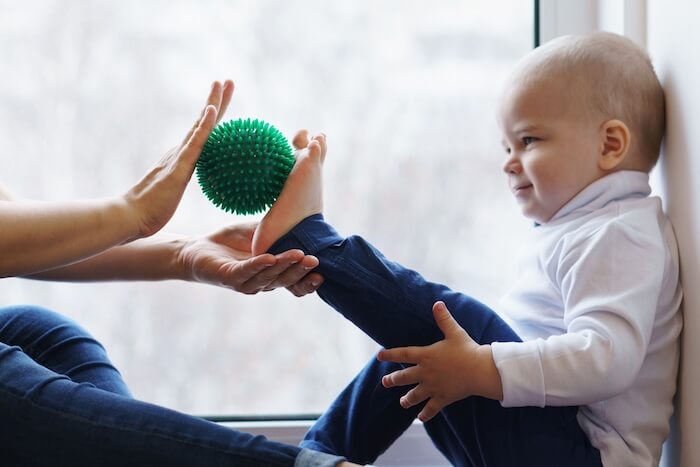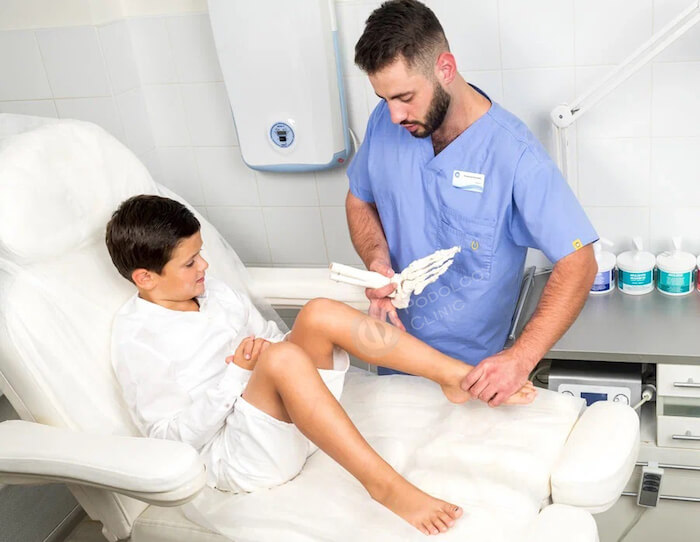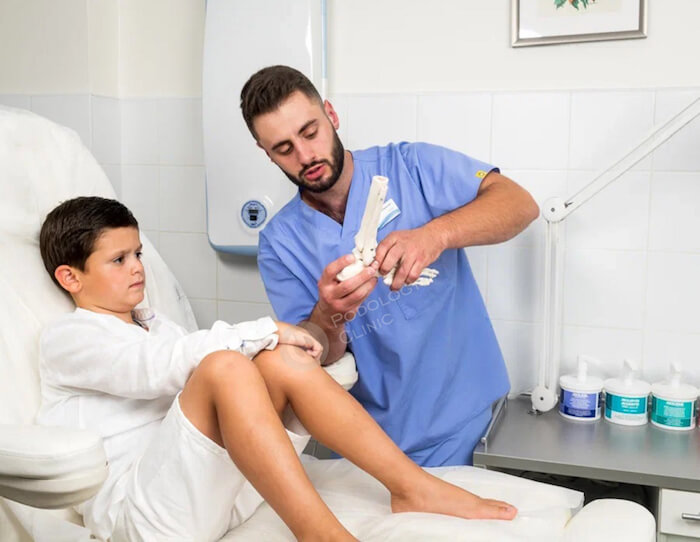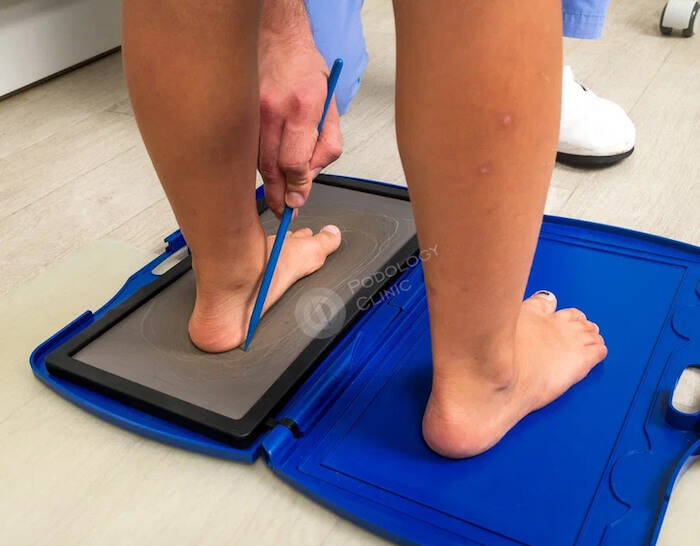03. What is an orthosis? What's the difference between them? And why is an individual orthosis better than a custom-made one?
![]()
- Insoles for children
- Causes of flat feet
- For an appointment with an orthopedist at the Support Point
- Individual orthopedic insoles for children: characteristics
- How to choose the right orthoses depending on the indication?
- What kind of orthotics by design
- Longitudinal
- Ricochet
- combination
- What are flat feet and how can I recognize them early?
- orthotics
- Professional production of individual orthoses for children.
- Indications for insoles can be:
- Advantages of custom-made orthoses
- Indications for custom orthotics for children
- Who Needs Insoles?
- Tailored full insoles
- Who can benefit from Formtotics insoles?
- The variety of Formthotics insoles
- Why should children wear insoles?
- Symptoms that require an orthopedic insole
- Which insoles to choose for your child
- When your child needs insoles
- When adults need orthotics
- What problems can orthoses help with in adults?
Insoles for children
Arch formation in children occurs gradually as they grow and develop. However, under the influence of certain factors (heavy loads, uncomfortable shoes), the weak ligaments of the foot can deform, which leads to the development of flat feet and other problems of the musculoskeletal system.
Flat feet in children are diagnosed at the age of 6-8 years, when the arching stage is completed. From this age, a correction with orthopedic aids can be made. Individual insoles ensure correct weight distribution, stop the progression of flat feet and can correct other defects - valgus feet, different limb lengths.
Causes of flat feet
Flat feet in children develop due to the following factors:
- Poorly fitting footwear (tight, uncomfortable, without a stable heel or insole);
- High pressure on the foot due to high levels of physical activity or being overweight;
- Comorbidities (rickets, cerebral palsy, poliomyelitis).

The human foot is a complex anatomical structure. It is made up of 42 muscles, 26 bones and numerous ligaments. The longitudinal arch (on the inner edge) forms in the infant in the first month of life. The child grows and his limbs develop at the same time: active longitudinal growth of the sole of the foot is observed in girls from 1 to 2 years of age, in boys from 2 to 3 years of age; the height of the arch varies between 16 and 24 mm between the ages of 3 and 8 years.


The bones become stronger, the muscles and ligaments become more flexible and stronger. But heavy loads or ill-fitting shoes can cause flat feet. Personal orthotics can help prevent this.

For an appointment with an orthopedist at the Support Point

The osteopath examines the patient's feet while standing on a special device - the plantoscope - and determines whether both feet correctly and evenly distribute the gravitational load of body weight on the contact surface of the foot with the ground simultaneously or separately. In this way it can be determined whether the foot is deformed in varus or valgus position.
The examiner also assesses the condition of the lymph and blood vessels in the foot.
Diagnosis of the foot in the supine position to identify corns and calluses, which may indicate excessive stress on the foot in these areas.
After the diagnosis is complete, the patient is fitted with a soft pad – a 100 percent contact pad.
Individual orthopedic insoles for children: characteristics
The insoles are made from a unique thermoplastic material; They provide natural support and cushioning and promote active muscle development, helping to form the correct arch of the foot. Our custom-made orthopedic insoles are ideal for everyday recovery and sporting activities.
At the Ostopora Osteopathy Center, materials from leading manufacturers such as FOOT MASTER (Russia) and FORM THOTICS (New Zealand) are used to create customized insoles for children.
How to choose the right orthoses depending on the indication?
Based on the functionality of the orthoses and the location of the correction elements, they are classified according to a value system.
VP1 – have heel pads and inserts for the inner longitudinal arch. Corrects the initial shape of the flattening, and also facilitates the rehabilitation period for those who have undergone surgery. In case of amputation of one limb (simplifying the task for the other limb).
VP2 – This is where the properties described above are reinforced. It is recommended at the onset of a valgus deformity.
VP3 – Is a combination product with a socket and heel supinator and a longitudinal footbed. Pronation is provided in the front area. This product is suitable for both children and adults.

VP4 – The parameters of the previous version are supplemented by a glove around the big toe. This is necessary if the fingers are deformed inwards.
VP5 – The orthosis supports the heel, the longitudinal arch and puts pressure on the forefoot. Supination is assumed in the rear and forefoot areas and elevation in the arch area. In addition to a flat inner instep, pronation along the entire edge of the foot is prevented.
VP6 - has different design variants. The main variant supports the inner and outer side walls (supination), in the middle of this insert there is a nub for pressure relief and recesses for the toes and heel. If necessary, the heel area is supplemented by a supinator or pronator. Recommended for complex disintegration, flattening, toe abduction and thickening.

BP7 – here the entire length of the foot is pronated and needs to be corrected. The best orthopedic insoles for children and even adults with clubfoot and varus.
VP8 – the previous version is supplemented with support around the big toe if the patient has a clubfoot in addition to the anterior attachment.
What kind of orthotics by design
In most cases, these are therapeutic orthoses that have a large number of variants in their design features. Depending on the overload area and the flat foot problem identified, patients need products with different functionalities. For convenience, the classification can be aimed at correcting anomalies located along or across the foot. It is not uncommon for patients to present with a combination of complications.
Longitudinal
The materials used can vary and also provide different levels of support and cushioning. Adding a roller along the foot redistributes the load. It enables a slight improvement in the damping properties and basically relieves the strain on the skeleton. Valgus and varus insoles for children (see photo) act on the outer edge of the foot.

Ricochet
Few people are aware of the problem that they need such insoles. Usually everyone imagines an insert (pelota) only on the inside of the orthosis. However, the arch of the foot also occurs in the forefoot area, approximately in the middle. It usually levels off in women over 30, but also occurs in minors who wear uncomfortable shoes. In this case the foot is flattened. It should be corrected with a metatarsal roller.
combination
A common question among the population is about choosing insoles for a child to solve complex problems. In this case, the orthosis will combine all the necessary longitudinal and transverse features. The final product can also be supplemented with other inserts to correct other problems.

What are flat feet and how can I recognize them early?
In childhood, when the musculoskeletal system is not yet fully formed, it is possible to prevent the development of foot deformities or to slow down and stop the development of flat feet.
Parents should carefully observe their child, their gait and the correct position of their feet.
Young children with flat feet often complain of tired feet and cannot walk for a long time. Your shoes wear out quickly. When walking, the toes either point very far to the side or are turned inwards. If you notice any of the above symptoms in your child, you should seek medical attention immediately.
After an examination, the doctor will prescribe exercise therapy, physiotherapy and, if the diagnosis is confirmed, orthoses.
orthotics
An excellent tool for the treatment and prevention of flat feet in children and adults.
It is important to determine the degree and type of foot deformity in order to make the right choice of orthotics. An orthopedist and trauma surgeon can help. If the foot is flat, padded and supinating insoles are required; If there is a deviation from the correct alignment of the foot, a depression in the heel area will help; Soft insoles are appropriate for injured feet.
When choosing insoles for the treatment and prevention of flat feet (both longitudinal and transverse), it is important not to limit yourself to simple single-shank insoles. Weakened muscles and ligaments need to be trained. It is not enough with simple deposits.
The insoles should be tailored to the size of the foot. Ideally, the insoles should be purchased before purchasing the shoes. Most insoles are quite thick and can cover part of the shoe size, so the shoes need to be a size larger. This is the only way your child will feel comfortable with insoles.
Prophylactic insoles have a minimal effect on the patient's foot. Therapeutic and prophylactic insoles serve to prevent and treat the disease early. Therapeutic insoles have a strong effect on the foot and are used to treat advanced flat feet. When worn long-term, orthopedic insoles help to train the foot muscles and stop the progression of the disease. In the second and third phases, the insoles relieve foot pain and increase resilience.
In our 5+ Medical Technology showroom you will find a large selection of sizes of orthopedic insoles. We have models for every stage, for every season and for every phase of your illness.
Professional production of individual orthoses for children.
In the HEALTH FOR CHILDREN medical center, the best practicing orthopedists from the Filatov Children's Hospital make individual insoles. Individual orthoses (insoles) made taking into account all anatomical features of the foot. The manufacturer, NPU Sursil-Orto, has set up an expert council for children's orthoses, which includes our clinic's doctor, Dr. AO Domarev and member of the Expert Council IV Krestjashin.
Our experts have been producing custom-made orthoses since the method was introduced in 2006, taking part in their development and combining their unique experience 'in one hand'.
This makes it possible to create an individual insole immediately upon receipt, taking into account the anatomical and physiological characteristics of your child. The thickness of the finished insole is 2-3 mm, so it can be used in a wide variety of shoes without any restrictions. Upon admission, the doctor gives detailed recommendations for use, choice of footwear and insole regime.
Indications for insoles can be:
- Flat foot deformities, polo valgus foot deformities, forefoot, club foot, toe deformities, heel spurs, cerebral palsy, joint osteoarthritis, rheumatoid arthritis;
- Osteo-muscular disorders – foot anomalies, osteochondropathies (Schinz-Haglund, Keller, Sever);
- physiological conditions – skeletal asymmetries, overweight.
A characteristic feature is the minimum thickness of the insole of 1.5 to 2.0 mm. With this technique it is possible to create an insole that is 100 % adapted to shoes with any heel height.
The lifespan of the product is influenced by many factors: walking habits, care of the product, peculiarities of the shoe, etc. The manufacturer's warranty is 180 days. During this period, the manufacturer offers full after-sales service for the product.
A consultation and an appointment can be arranged using the feedback form on the website or by calling the telephone numbers provided.
In the Healthy Kids Medical Center of the Filatov Children's Hospital, the best orthopedists make individual orthoses. The individual orthopedic insoles are made taking into account all anatomical features of the foot. The manufacturer Sursil Ortho has set up an expert committee for children's orthoses, in which Dr. Alexander Domarev, MD, PhD, chairs and Dr. Igor Krestyashin, MD, PhD, is a member of the expert panel.
Advantages of custom-made orthoses
There are many advantages to having custom-made orthoses made in the pediatric department of the SM-Clinic.
The production of orthoses in Moscow in the children's department of the SM Clinic is a guarantee of safety and high-quality products. This is possible thanks to the high professionalism of our orthopedists/traumatologists and the use of modern equipment and materials. Remember that a positive therapeutic effect can only be achieved by wearing custom-made orthoses.
Indications for custom orthotics for children
Custom-made orthoses for children are essential for the prevention and treatment of the following musculoskeletal disorders:
Other diseases of the musculoskeletal system can also be treated, such as scoliosis, osteochondrosis, heel spurs, osteochondropathy of the heel bone, shortening of the lower limbs, etc.
Consultation with an orthopedist/traumatologist is also recommended for children who complain of foot pain, rapid fatigue when walking, or difficulty choosing footwear. Our specialists carry out a comprehensive examination and, if necessary, make corrective insoles.
Who Needs Insoles?
When a child is just learning to walk, arch deformities may occur:
These problems require physical therapy, special insoles and careful choice of footwear.
The individual insoles are made specifically for the foot, taking into account the size of the shoe, the type of footwear and the physical activity. An orthopedic insole for foot deformities can be worn daily or used only in sports shoes for training.
Tailored full insoles
Indications for the use of full insoles include.
- asymmetry of the skeletal system;
- flat feet;
- disorders of the muscular or skeletal system;
- overweight;
- Rheumatoid arthritis;
- clubfoot;
- heel spur.
These insoles for children help to create optimal conditions for the foot, reduce pain and increase mobility. The right choice of insoles prevents foot deformities and reduces the load on the lower limbs during sports activities.
Who can benefit from Formtotics insoles?
By knowing the biomechanics of the lower limbs, it is possible to influence the foot and significantly improve its functionality, avoiding symptoms of fatigue and pain in the feet and spine. Formtotics insoles help people with:
- flat feet,
- heel spur,
- ankle and patella joint pain,
- valgus ankle,
- clubfoot,
- osteoarthritis,
- hip and knee bursitis,
- varicose veins,
- diabetic foot,
- clubfoot.
Formtotix insoles are often used in rehabilitation after injuries. They help you train and recover without pain. Sometimes it is necessary to wear the insoles long after treatment is complete. Some patients only need the insoles for a short time. However, the mechanical properties of the Formthotic system allow the continuous use of insoles to improve foot position.
The variety of Formthotics insoles
Shoe insoles come in a variety of sizes and styles to ensure the wearer's comfort. The Formthotic models are available in various modifications depending on the density of the base material. The orthopedist will conduct a series of tests beforehand to understand how the patient's feet move and deform when walking and running. This is necessary in order to choose the right orthopedic insole with the correct shape, width and type of activity.
| Active form | Double density. Consists of a firm base and a softer top layer. Guaranteed support and comfort. Suitable for general use and active patients with diabetic foot. |
| Work | Double foam layer: a softer, more cushioned top layer and a medium-firm base for greater comfort. Suitable for environments where additional foot cushioning is required without compromising stability or functionality. |
| Low profile | High density, ideal foot support all day long. |
| Medical | Low density, the focus is on comfort and support. Ideal for children, the elderly and people with very low arches. |
| Solid | High density, ideal support throughout the day and during sports activities. Typically used when the emphasis is on keeping the foot in a specific position and controlling movement. |
The variety of insoles allows the patient to determine what type of support they need at any given time. The different models are designed for different levels of support, so multiple Formthotic insoles can be purchased for everyday use or for more serious exercise and sports. Soccer shoes, for example, have limited internal space and require less arch support. Running shoes typically offer more room for fit.
Why should children wear insoles?
Orthotics provide stability and support for your child's developing feet. Until the age of around 7 years, a child's feet are constantly changing and it is extremely important to support the physiologically correct alignment of the feet during the first few years of life. Orthotics can be recommended for children with or without a diagnosis and can be prescribed for foot weakness, flat feet, toe walking, drooping toes, tone problems, leg length discrepancies and more. Untreated foot problems in children can lead to pain in the feet, ankles, knees and back, deterioration in gait and even delays in motor skills as they age.
Most children develop their arches as they grow, and their feet change dramatically during the first few years of life. To achieve optimal gait, the shins gradually rotate to align the feet with the knees. This means that it does not make sense to order children's orthoses when your child is just learning to walk.
If your child is less than three years old, there is no need to worry. Many problems related to a child's gait (flat feet, arched feet, inward-turned feet, walking on tiptoes) usually disappear on their own by the time the child reaches three years of age as the muscles develop and the structures of the foot become stronger . Orthoses are therefore rarely recommended for children under this age. If necessary, minor shoe adjustments or exercises may be recommended.
If an orthopedist or prosthetist recommends orthotics, custom-made orthotics are the most sensible option. Of course, commercially available insoles are also available in orthopedic shops and markets that only require the size of the child's foot. However, there is one 'but' - these insoles can only be used from the age of 6-8. What if the foot needs to be corrected at a younger age? The solution in this case is to use individual insoles. Custom insoles offer a personalized approach, better pressure relief and a greater therapeutic effect. Since foot deformities are not symmetrical, the arches of the right and left feet are different, and the insoles available on the market are designed for the standard foot. In addition, custom-made insoles can also be used at a younger age.
Symptoms that require an orthopedic insole
Any child with any of the following symptoms can benefit from orthotics

- Abnormal gait and abnormal footwear
- Displacement of the plantar fascia (low or high arch)
- Excessive wearing of shoes
- Frequent falls
- They find it difficult to run as fast as other children their age.
- Pain in the feet, legs, knees or back pain
- Early fatigue during physical activity
- Foot deformities (valgus, first signs of hammertoes)
- Development of calluses and corns
- Dislocated knees or ankles.
Improving foot structure leads to better function, and symptoms usually improve or disappear.
Which insoles to choose for your child
As the foot develops, it can still be corrected. If the podiatrist does not find any obvious curvatures, prophylactic insoles without a heel edge are sufficient. They correctly distribute the load in the foot and improve blood circulation, thereby saving the child from flat feet, club feet and other deformities. It is better to buy several pairs: for sneakers, outdoor shoes and sports shoes.
When your child needs insoles
A clumsy gait is endearing even at a young age. Over time, congenital clubfoot becomes a worrying symptom. If your child leans forward too much when walking, stomping or stomping on just one edge of the shoe, you should see an orthopedist while you can still make a difference.
Kosolapics can be helpful. Their special feature is an elongated frame in the forefoot, which forms the correct roll of the child's foot when walking and improves gait. The insole is designed to protect the sole from overload and eliminate the external symptoms of clubfoot.

Does your child complain of foot pain? Does he refuse to walk for long periods of time or is his gait worrying you? Children often do not understand what is happening to them, so it is our job to identify the problem. Sometimes it's not a simple whimper, but rather a longitudinal flatfoot.
Orthoses with a high inner edge, cup-shaped heel and significant lining of the longitudinal arch can help to correct the problem. The insoles do not press on the child's delicate skin because their thickness and stiffness gently decreases towards the edges. They protect the child's feet from the stress of walking and standing, improve gait and relieve leg fatigue.

When adults need orthotics
Adults often put too much strain on their feet and don't think about their health. In vain, because sooner or later this indifference leads to pathological foot deformities. Take care of your feet sooner.
- Do you actively do sports? Stock up on insoles with soft cushioning and gel elements for your sneakers or sports shoes.
- Do you spend a lot of time on your feet? Put insoles with a plastic cage and silicone inserts in your shoes to reduce static loading.
- Do you spend a lot of time walking around the city? Then you need insoles with a rigid construction so as not to put strain on the foot. Soft insoles are not suitable in this case.
- Pregnant women can benefit from padded insoles that gently support the arch of the foot and relieve pressure on the spine.
- Can't live without high heels? Use special insoles that provide additional arch support.
- Have you bought new shoes for winter? Don't forget to use orthopedic insoles made from natural lambskin wool.

What problems can orthoses help with in adults?
In adults, longitudinal flatfoot is often combined with transverse flatfoot. Already in the second stage there is severe pain in the foot, in the third stage also in the ankles and knees. Special orthopedic insoles correct the alignment of the foot and redistribute the load. In complicated cases (stage III) they are made individually.
In transverse flatfoot, the foot is shortened, the big toe tilts inward and the head of the metatarsal bone tilts outward. In addition to insoles, special spaces between the toes and nightgowns are used to fix the toes in the anatomically correct position.
Soft padding and silicone inserts have a shock-absorbing and pain-relieving effect. If you have calluses, cracks and corns, walking with them is much more pleasant. Especially when they are complemented by a cushioning insole treatment.
Read more:- Customized orthoses.
- orthoses.
- Orthotics for flat feet.
- Manufacture of orthopedic insoles for children.
- production of orthoses.
- Field reports on custom-made orthoses.
- Clubfoot shoe insoles for children.
- Orteka – made-to-measure orthoses.
